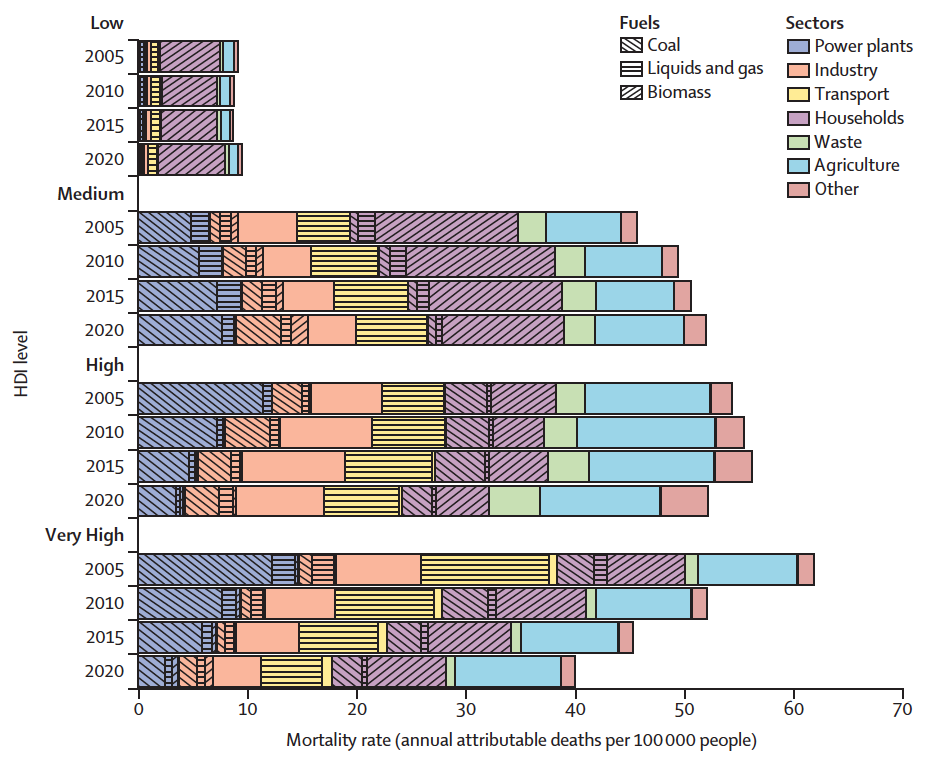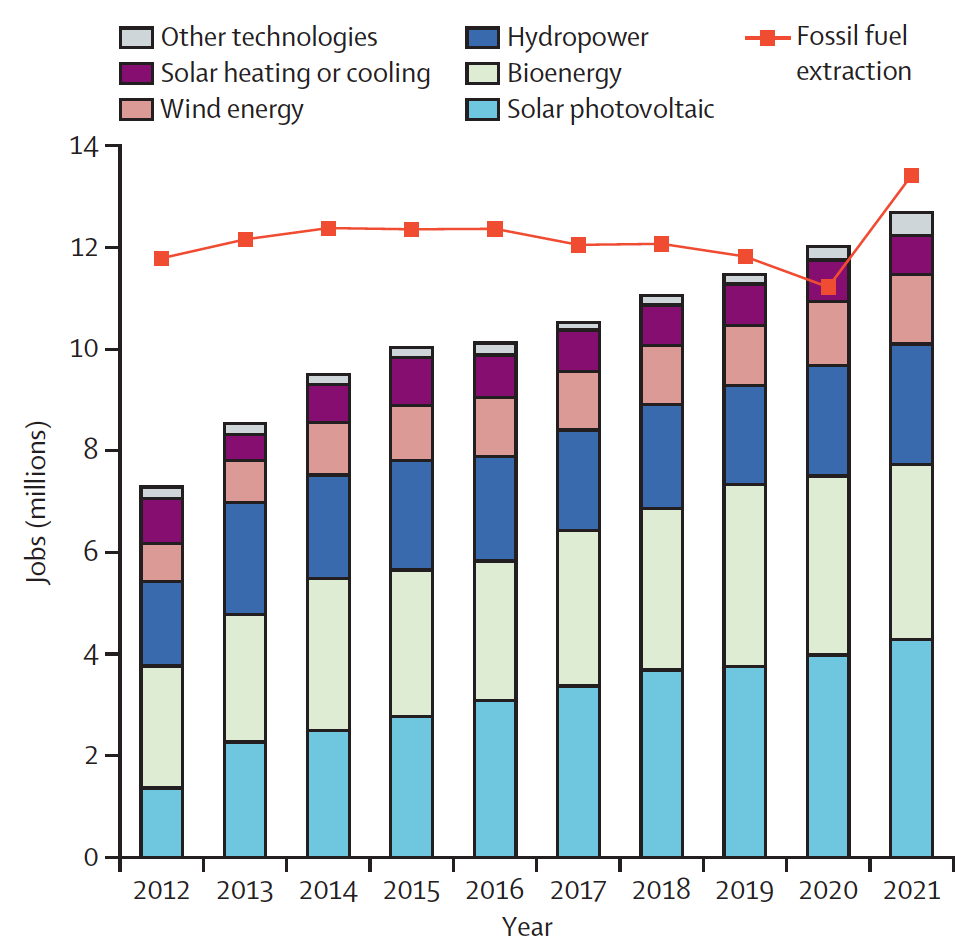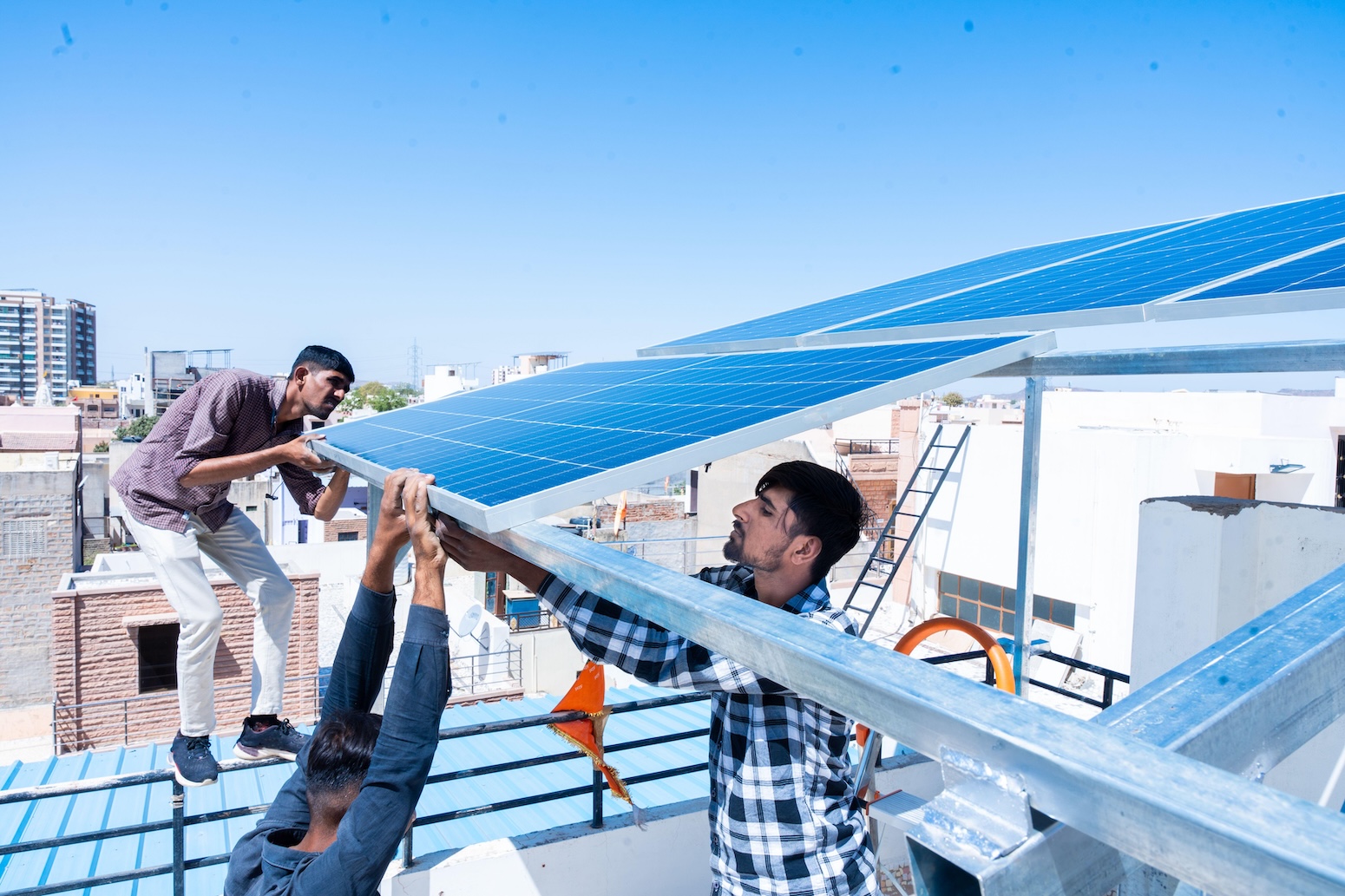Loss of labour caused by heat stress wiped out the equivalent of 4% of Africa’s GDP in 2022, warns a new report from the Lancet Countdown on Health and Climate Change.
The eighth iteration of the annual report features 47 different indicators of climate change and human health, such as heat mortality, food insecurity and air pollution exposure. For the first time, the report includes a dedicated section on regional trends, highlighting the inequalities between developed and less developed regions.
On extreme heat, for example, it finds that in small island developing states, 103 days of health-threatening temperatures every year are attributable to climate change over 2018-22. Across Europe, North America and Oceania, this number is less than 30.
This is also the first Lancet Countdown report to include projections on how the indicators might worsen in a warmer world. Under a 2C warming scenario, for example, 525 million additional people will experience food insecurity by 2041-60, compared with the 1995-2014 baseline.
Many indicators suggest that the world is “accelerating in the wrong direction”, the report warns. It finds that the strategies of the world’s 20 largest oil and gas companies would result in emissions surpassing levels consistent with limiting warming to 1.5C by 173% in 2040.
However, the lead author of the report told a press briefing there is also reason for “hope”. The number of people who died due to fine particulate air pollution decreased from 1.4 million in 2005 to 1.2 million in 2020, for example. And scientific research and media engagement with health and climate change have both continued to grow, the report says.
Heat stress
In a “major addition”, the report presents attribution analyses of key indicators, to quantify the influence of climate change on them for the first time.
Over 2018-22, the average person experienced 86 days of “health-threatening high temperatures” per year, according to the report. Around 60% of these temperatures were made more than twice as likely due to climate change, it says.
Heat-related deaths often follow exposure to extreme heat – and people under the age of one or over the age of 65 are particularly vulnerable to high temperatures.
Globally, heat-related deaths in people aged over 65 were 85% higher in 2013-22 than in 1991-2000, the report finds. This rise is “substantially higher” than the 38% increase expected if the climate had remained constant and only demographics had changed, it adds.
For the first time, the report also includes projections of what key indicators may show in the future. The report authors developed these with the help of the Climate Vulnerable Forum – a group of countries highly vulnerable to the impacts of climate change.
They find that if global temperature rise is only limited to 2C above pre-industrial temperatures, stabilising at 1.8C by the end of the century, then annual heatwave exposure for people older than 65 will rise by more than 2,500% by 2080-2100, compared to 1995-2014 levels.
The report warns that outdoor workers are the “most exposed to climate hazards”. It estimates that in 2022, around 1.6bn paid workers – mainly “young or middle-aged” men – worked outside. However, the report notes that unpaid labour, which is often disproportionately carried out by women, is not included in these figures.
The graphs below show the average annual hours per person over 1991-2022 when “light physical activity” entailed at least a moderate (light orange), high (dark orange), or extreme (red) heat stress risk.
From left to right, countries are grouped according to their human development index – a measure of a country’s development, where higher numbers indicate greater development. Least developed countries (low HDI) are shown in the left-most chart and the most developed countries (very high HDI) are in the right-most chart.
Heat exposure caused 490bn potential labour hours to be lost globally in 2022, amounting to 143 hours per person, the report estimates. This is nearly a 42% increase from the 1991-2000 average, it adds.
The authors find that loss of labour due to heat exposure resulted in a $863bn loss of “potential income” in 2022. The agriculture sector was hit the hardest by the loss of labour, accounting for 82% of losses in low HDI countries, they add.
Dr Marina Romanello is the executive director of the Lancet Countdown, a climate change and health researcher at University College London and lead author on the report. She told a press briefing that workers in the agricultural sector are “heavily exposed to the elements” and often have few resources to protect themselves.
She added that in countries with a low HDI, agricultural workers are often in charge of local food production, meaning that heat-related labour loss has direct implications for food security.
Loss of labour due to heat stress wiped out the equivalent of 4.1% of Africa’s GDP in 2022, mainly from losses in the agricultural sector, the report finds. Meanwhile, Europe and North America only saw labour losses equivalent to 0.1% and 0.2% of their GDP, respectively.
The graph below shows effective income losses in 2022 due to heat stress in agriculture (blue) and other sectors (red), as a percentage of GDP, by continent.

Unequal impacts
The authors also explore how the changing climate affects people indirectly, including through changes in agriculture and the spread of disease.
The report finds that the global land area affected by at least one month of “extreme drought” per year increased from 18% in 1951-60 to 47% in 2013-22. The map below shows the change in the number of months of extreme drought between these two time periods, where red indicates an increase in drought and blue a decrease.

Africa was also the region most affected by droughts over 2013-22, with 64% of its land area affected by at least one month of extreme drought per year – up from 9% in 1951-60 – the report finds.
Year-round drought affected many “vulnerable areas” in 2022, the report warns. It highlights the ongoing drought in the Horn of Africa, where millions of people have been pushed into famine. (Separate analysis has found that the drought “would not have happened” without climate change.)
The Lancet adds that the higher frequency of droughts and heatwaves in 2021 pushed 127 million more people into “moderate or severe” food insecurity, compared to 1980-2010. This was one of the most “shocking” findings of the report, Romanello told the press briefing.
The report projects that under a 2C warming scenario, 525 million more people will face food insecurity by 2041-60 than in the 1995-2014 baseline.
Climate change is also increasing the range of certain pathogens. Warmer seas have already increased the area of coastline suitable for Vibrio bacteria – a pathogen that can cause sickness in people and animals.
Meanwhile, a combination of climate change, urbanisation and human movement are driving up cases of dengue fever, the report finds. It says that “cases of dengue have doubled every decade since 1990, and almost half of the world population is now at risk of this life-threatening disease”.
However, the report also points to positive developments, such as the increase in research on climate change and health.
The number of scientific papers investigating the links between health and climate change in 2022 was three times higher than in 2012, the report finds. It adds that most research focuses on Asia and studies the impacts of climate change on health, although there is a rising number of papers addressing mitigation and adaptation too.
‘Unjust transition’
The report also assesses the progress of the global energy transition, stating that the world is “often moving in the wrong direction”.
Developed countries still have much higher per-capita emissions than less developed ones. In 2020, per-person CO2 emissions in Oceania, for example, were 14 times higher than in Africa and more than three times higher than in Asia, according to the report.
The authors paint a picture of uneven progress in the push to decarbonise. Developed nations are making “steady but insufficient progress towards transitioning”, while less developed nations are not receiving the funding they need to do the same.
“Modern renewables” such as wind and solar accounted for 90% of new electricity capacity in 2022, the report finds. However, it notes that only 1% of renewable energy investments in 2022 were in Africa. It adds that modern renewables make up 11% of all electricity generated in very high HDI countries, but account for 2% of electricity in low HDI countries.
The graph below shows the carbon intensity of the energy system, both globally (dashed) and by HDI (solid coloured lines).

“Access to stable, non-polluting energy is crucial for advancing health and wellbeing,” the report says. It estimates that in 2022, 77 million people had no access to electricity – mainly in sub-Saharan Africa and south Asia – while millions of others only have access to “dirty” energy sources.
Biomass burning – which the report calls “highly polluting” – accounted for 92% of household energy in low HDI countries and 8% in very high HDI countries in 2020. Women and girls are often “tasked with household energy-related activities”, meaning they are disproportionately affected by air pollution-related diseases, the report notes.
Overall, air pollution caused by particulate matter with a diameter smaller than 2.5 micrometres (PM2.5) was responsible for 1.2 million deaths in 2020, down from 1.4 million in 2005, the report finds. “Reduced coal pollution contributed to about 80% of the decrease,” it adds.
The figure below shows the mortality rate due to PM2.5 in 2005, 2010, 2015 and 2020 for countries with low (top), medium (second from the top), high (second from the bottom) and very high (bottom) HDI levels.
The colour of each bar indicates which sector produced the pollution, for example light blue for agriculture and purple for households. The shading on each bar indicates the type of fuel.

“The uptake of clean energies has been unjust and way too slow,” Romanello told the press briefing.
However, Romanello said the report also gives reason for “hope”. For example, the report finds that employment in the renewable energy sector increased by 5.6% in 2021 reaching a record of 12.7 million employees.
The graph below shows employment in different renewable energy sectors (bars) and in fossil fuel extraction (orange dots).

‘Wrong direction’
The final section of the report focuses on finance. It finds that investment into low-carbon energy increased globally by 15% in 2022 to $1.6tn, exceeding fossil fuel investment by 61%. Meanwhile, lending to the low-carbon energy sector has “radically increased”, reaching near-parity with lending to the oil and gas sector.
However, the authors warn that financing to the fossil fuel sector is still on the rise. Over 2017-21, the 40 banks that lent most to the fossil fuel sector collectively invested $489bn annually in fossil fuels – a 52% increase from their 2010-16 lending – the report finds. In addition, global fossil fuel investment increased by 10% in 2022, reaching more than $1tn.
In 2020, 78% of the countries assessed generated collective fossil fuel subsidies of $305bn – a value higher than 10% of national health spending in 26 of the countries – the report adds.
It adds that the strategies of the world’s 20 largest oil and gas companies as of February 2023 would result in emissions surpassing levels consistent with limiting warming to 1.5C by 173% in 2040, if they were carried out as planned.
The report warns that inequalities between developed and developing countries “are aggravated by the persistent failure of the wealthiest countries to deliver the promised modest annual sum of $100bn to support climate action”.
However, it also highlights the “transformative health benefits that could come from the transition to a zero-carbon future”, and emphasises the need for a central role that the health community can play in securing these benefits.
Sharelines from this story




















Discussion about this post